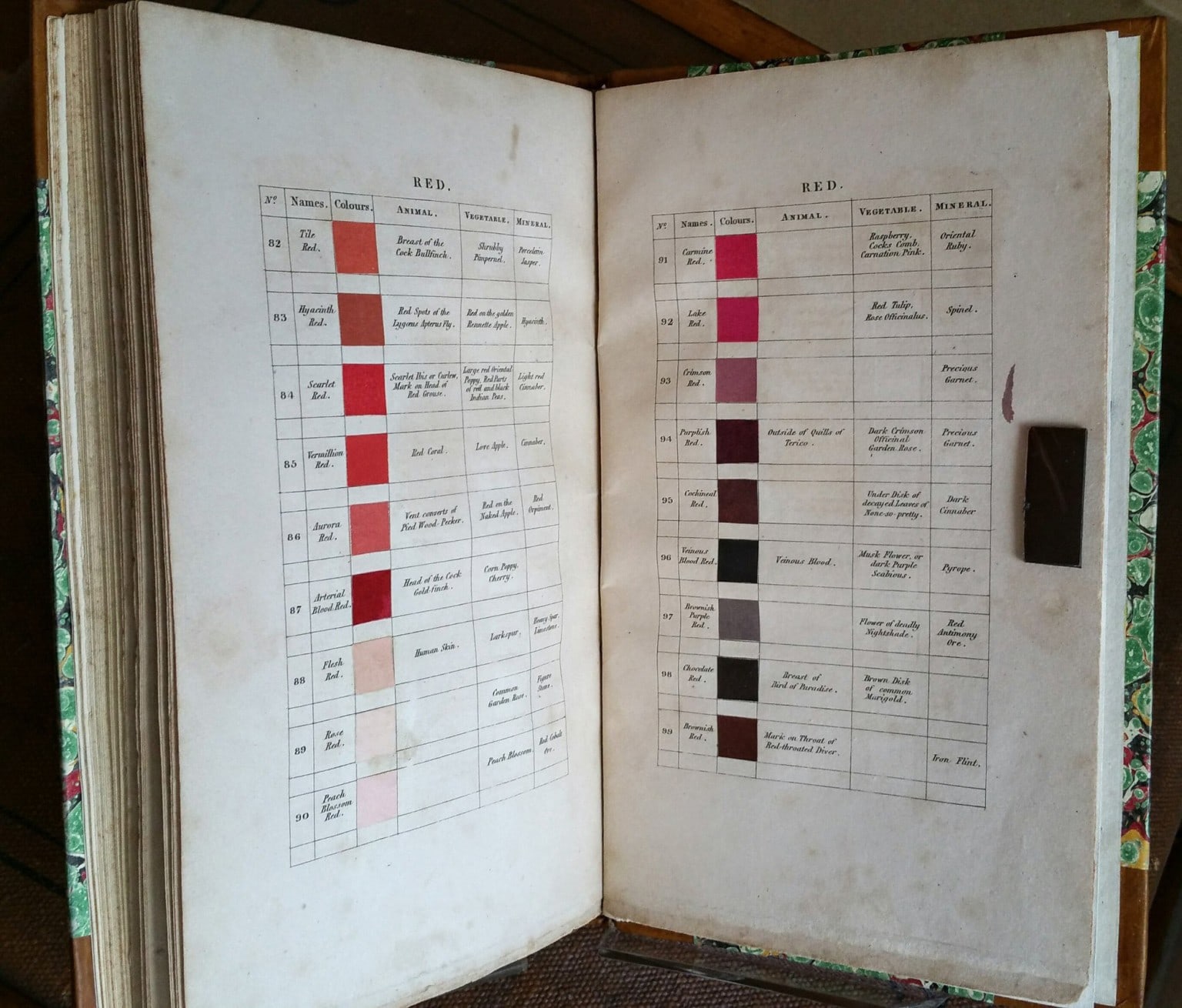We might say “I like your blue sweater”. But we could instead say “I really love your “Pavilion Blue” sweater. Of course we would need to have memorised the Farrow & Ball colour card and have been brainwashed with these named colours.
When visiting a Bobbi Brown make up store recently I was struck at the incredible variety of lipstick colours on display. Many of the shades are almost identical, but the customers need that level of choice to get the absolute perfect colour for their lips.

On a recent visit to the Farrow & ball paint store I picked up a different colour chart - the Colour By Nature chart - a collaboration with the Natural History Museum (London). This is based on Werner’s Nomenclature of Colours[1].

Werner’s Nomenclature of Colour (first published in 1814) constructs a system or taxonomy for the classification of colour with reference to things in the natural world. The classification was then extended and published by Patrick Syme. A total of 110 colours are included.
The book is available for viewing online on the Public Domain Review web site.
Further Googling around I discovered that Werner’s Nomenclature has an interactive version created by Nicholas Rougeux.
Colours on the Web
If you are interested in how Werner’s colours can be used on the web then dig into the wonderful Nicholas Rougeux’s site and you will find a download link to grab a spreadsheet of all of the colours with their hexadecimal colour equivalents.
We tend to use hexadecimal or RGB values for defining web colours, but remember, there are named colours on the web also. [And here they are presented by w3schools.
Presented more beautifully by Dixon and Mo.
Here is a gallery of these images kept on Flickr
Click each image here for an enlarged view.
